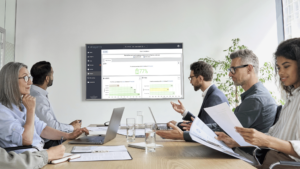
Rethinking pediatric clinical trials: guidelines from pediatric experts
In this last episode on pediatric clinical trial challenges, Begoña Nafria, pediatrician and patient engagement

Expanding flexibility of eCOA data collection with controlled interview mode
With quickly evolving technologies, electronic Patient Reported Outcomes (ePROs) can now be administered in a variety of ways. If ePRO self-completion via a Provisioned Device (PD) remains the most frequent solution, some studies can be strong candidate for a Bring Your Own Device (BYOD) approach, which brings flexibility and reduces the patient’s burden. Alternative options also include ePRO completion on a web browser via WebCOA, or a telephone or telemedicine interview. Described in the past as potentially generating bias, the interview mode has returned during the pandemic as a valuable alternative. By allowing the collection of ePROs by trained personnel during a remote interview, the interview mode constitutes an additional data entry mode when clinical trial participants cannot go to the study site for a scheduled visit.
We recommend choosing an interview administration mode in specific circumstances when:

With careful training and monitoring of interviewers to minimize any interview bias, this mode of administration also has the value of increasing data quality as compared to paper back-up solutions. Studies showed that the telephone-administration mode of certain questionnaires, , such as the Short Form Health Survey Questionnaires (SF-36) or the Graded Chronic Pain scale (GCPS) is equivalent to and as valid as the self-administered mode.

Note that within a given study, it is possible to mix both self-administered ePROs/eObsROs with interview administered questionnaires, so that the administration mode is adapted to the stage of the clinical trial. For instance, on-site completion can be the only available administration mode during screening visits, whilst optional interview mode can be used during the treatment phase, and interview mode then becomes the main administration mode during the follow-up phase of long-lasting clinical trials.
Although the Interview mode is not a suitable back-up option for eDiaries, as the frequency of diary administration risks a heavy burden for site staff and patients, it remains an interesting avenue to add flexibility to eCOA data collection in clinical trials. At Kayentis, we are convinced that multiplying the options for data collection is necessary to support the industry switching to a new clinical trials paradigm.
Learn more:

In this last episode on pediatric clinical trial challenges, Begoña Nafria, pediatrician and patient engagement

In this third episode on pediatric clinical trial challenges, Begoña Nafria, pediatrician and patient engagement

Integrating PROs into studies on MASH, also known as NASH, is crucial. MASH is a debilitating

Asthma clinical trials present several specificities, such as the use of disease-specific health-related quality of

NonAlcoholic SteatoHepatitis (NASH), now called Metabolic Dysfunction-Associated SteatoHepatitis (MASH), affects almost 115 million adults globally

In this second episode on pediatric clinical trial challenges, Begoña Nafria, pediatrician and patient engagement
Last update : 28 January 2022